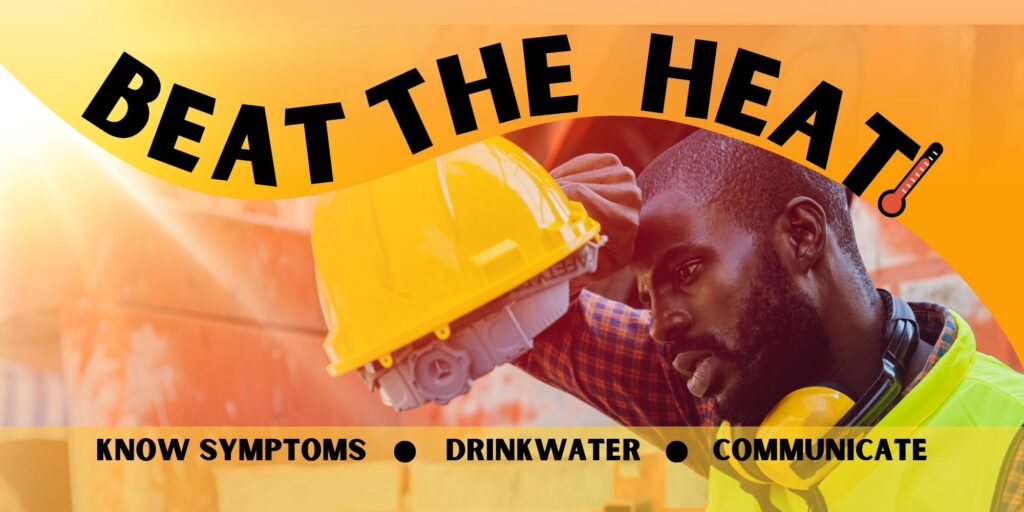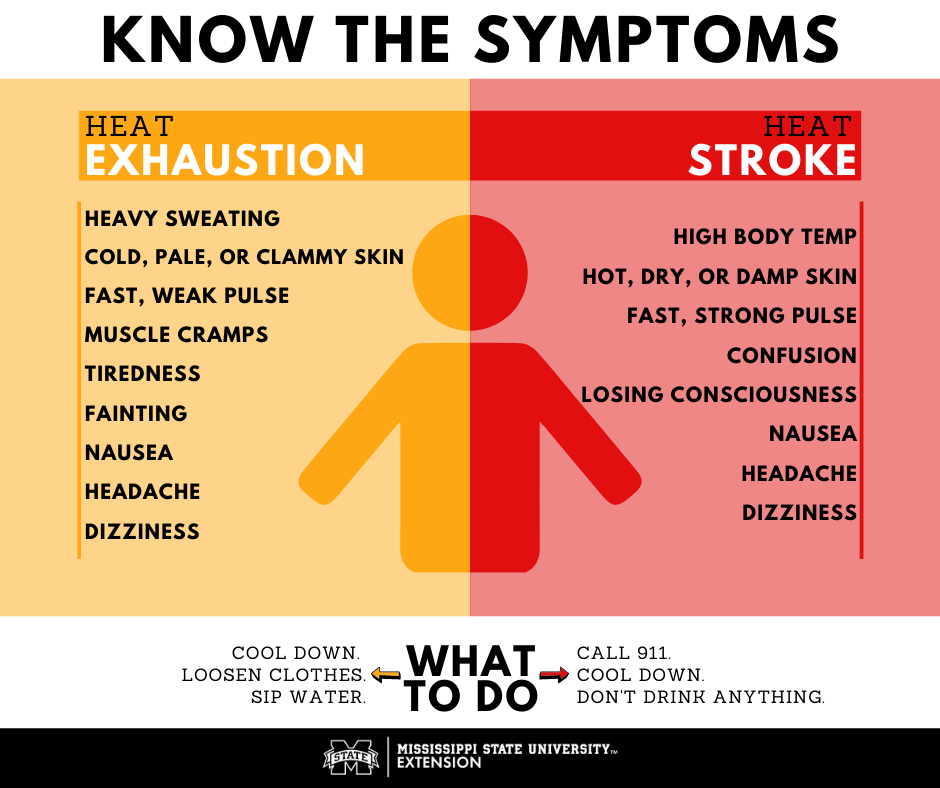Let’s Beat the Heat: Prevent, Spot, and Combat Heat Illness

Summer is here, and with sunshine, shorts, and beach days, also comes the heat. While the warm weather can be enjoyable, under certain conditions and temperatures, it can also be a hazard.
The U.S. Department of Health and Human Services says, “Extreme summer heat is already increasing [this year] in the U.S. and climate projections indicate that extreme heat events will become more frequent and intense in coming decades.” 1
Here in the County, many employees spend vast amounts of time outdoors, from construction workers to officers to park employees and many more. When you pair that with the idea that Virginia is predicted to have above-average temperatures throughout the summer, it’s important to take the weather conditions seriously and spread awareness on how to prevent and combat heat-related incidents.
Signs of Heat Illness
Heat illness refers to “a serious medical condition resulting from the body’s inability to cope with a particular heat load”2 such as hot weather. There are two prominent kinds of heat illnesses: heat exhaustion and heat stroke. Through talking with Craig Collins and Joseph DeJesus of Emergency Management and Workplace Safety, and Captain Christian Kidd of the Division of Fire, it’s safe to say that the biggest piece of advice when dealing with high heat is to KNOW THE SYMPTOMS!

Heat exhaustion is a less severe form of heat illness and left unchecked could lead to heat stroke. Symptoms of heat exhaustion include nausea, tiredness, dizziness, cold, clammy, or pale skin, as well as a weak pulse and muscle cramps.
Heat stroke, on the other hand, is life-threatening. If you see or experience the following big red flag symptoms, emergency action should be taken, and 9-1-1 should be contacted immediately: unconsciousness, slurring of words, confusion, fast pulse, and, very importantly, dry skin when you should be sweating. Collins says, “The minute you start getting dizzy, that’s a red flag.” Other symptoms include nausea, tiredness, dizziness, and a high core body temperature.
Passive Cooling If You’re Experiencing Symptoms
For most of the symptoms above, you should use a technique called passive cooling. This involves taking gradual steps to cool off as opposed to cooling off instantly.
- Instead of chugging water, sip it (the water should be room temperature, not extremely cold, according to Captain Kidd).
- Move to a shaded or air-conditioned area.
- Remove layers of clothing.
- Put wet or cool cloths on heavily circulated areas, like the back of the neck or under the armpits.
- Remove shoes or boots (According to DeJesus, this is an overlooked technique but really works as your feet store a lot of heat).
Prevention
Know your body. All of our bodies adjust to the heat differently, and everyone’s tolerance is not going to be the same. It’s essential to understand how much of a shift being in the heat might affect you personally. For example, if you’re someone who is used to being in the AC, your body might not be able to tolerate the heat as much as a peer or co-worker who is outside all the time or you just might not be able to handle the heat as much as you used to, which is okay. Being honest with yourself and knowing when you’re pushing your limit or approaching it is the key to surviving the heat.
Constant communication is another key component. While we might not have the same heat tolerance as everyone, we exemplify common symptoms when heat illnesses arise. DeJesus recommends using the buddy system in order to recognize and communicate symptoms for yourself and others. It’s like checking up on one another. Additionally, when dealing with extreme heat, don’t be afraid to let your supervisor know you’re not feeling well and need a moment to cool off.
Drink plenty of water. While Henrico doesn’t require employees to consume a certain amount of water when it’s hot, it is highly recommended by OSHA to drink one cup of water every 15 to 20 minutes spent in the heat. Captain Kidd suggests drinking “at least two liters” a day regularly. If you are drinking sports drinks, make sure you’re balancing your electrolytes and water with a half-and-half ratio.
Help From Supervisors
One helpful tip for supervisors is to get a good understanding of the heat index and plan any outdoor work according to it. High humidity can make the actual temperature feel way higher than it is. Essentially, the heat index gives warning and danger levels according to the overall feel outside. There are many mobile apps, like the OSHA-NIOSH Heat Safety Tool, that will conveniently show you the heat index.
Additionally, The Occupational Safety and Health Administration (OSHA) and the Virginia Occupational Safety & Health (VOSH) require employers to provide water, so employees can stay hydrated throughout the day.
Although anyone can get heat illness, certain groups are more prone to its effects. The two groups at the highest risk are the elderly and children. Athletes, sports spectators, construction workers, and those out on the water, like boaters, are also high risk. Finally, alcohol consumption increases the risk of heat illness, too.
So, whether you’re on the job, at the beach, or at your kid’s soccer game, enjoy the weather but know the symptoms, stay hydrated, and Let’s Beat the Heat!
1 https://www.hhs.gov/climate-change-health-equity-environmental-justice/climate-change-health-equity/climate-health-outlook/extreme-heat/index.html#:~:text=Extreme%20summer%20heat%20is%20already,2022%2C%20and%202%2C302%20in%202023
2 https://www.dir.ca.gov/dosh/etools/08-006/whatis.htm#:~:text=%22Heat%20Illness%22%20means%20a%20serious,see%20T8%20CCR%20Section%203395).

